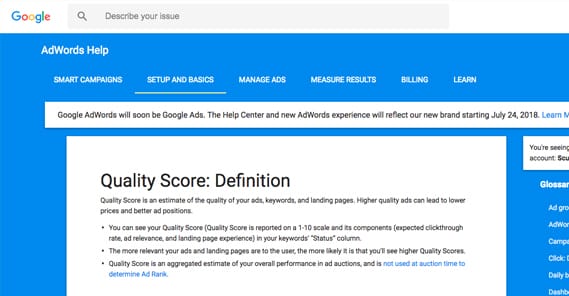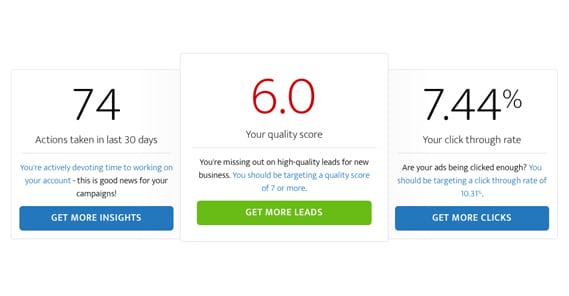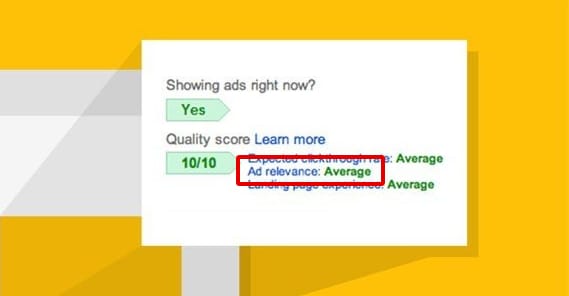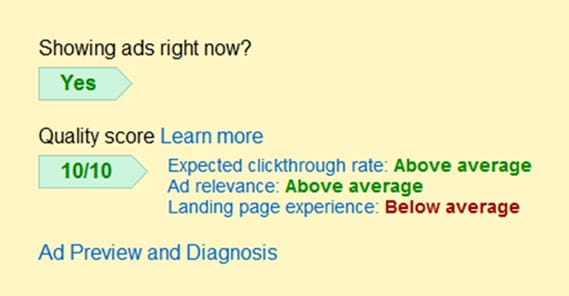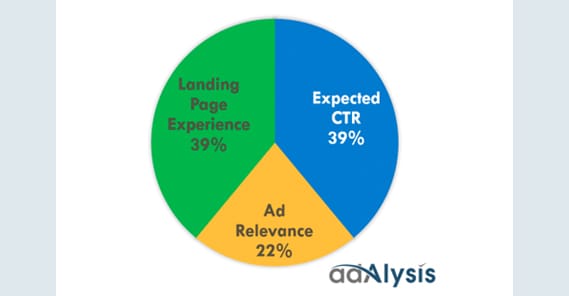Does Your Conversion Rate Affect Google Ads Quality Score?
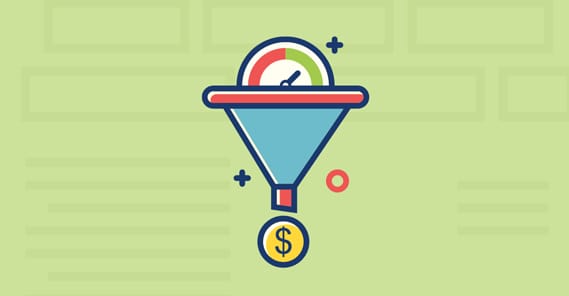
We all know that Google just freakin’ loves secrecy. Sometimes it seems like they revel in it. Corporate secrets are one thing, but they obfuscate so many elements of their tools and processes that sometimes it can be difficult to find a shred of reasoning behind seemingly arbitrary decisions. Of course, it doesn’t help that sometimes Google makes legitimately arbitrary decisions, often against the grain of common wisdom, but that’s neither here nor there.
AdWords, soon to be known entirely as Google Ads, has a lot of different components that go into its calculations. One of those components is your quality score. Quality score is, for many people, something of a mystery.
Before we dig too deep, I’d like to give a cursory – and unsatisfactory – answer to the question posed in the title. Does your conversion rate affect your quality score? According to an ancient post on the Google blog, no.
You’d think I could end the post here, but as many of you know, nothing ever stays the same in web marketing. That post was made in December of 2008, nearly 10 years ago. This was three years before Panda, four before Penguin. This was back when I Kissed a Girl was in the top 15 on the Billboard top charts. The world was a very different place.
So what I’m going to do with the rest of this article is dig into as much relevant, modern information I can, to see if I can’t determine whether or not that answer is still the same. What do you think? Feel free to make your predictions now in the comments, and then let me know if you were right or not.
First-Hand Information
Let’s start by seeing what Google says directly about quality score. A lot of this will be old hat for those of you who have studied this before, but it might be new to some of you, and hey, there’s no reason not to start at the basics.
“Quality Score is an estimate of the quality of your ads, keywords, and landing pages. Higher quality ads can lead to lower prices and better ad positions.” – Quality Score: Definition.
You can check your Quality Score, which will be a number between 1 and 10, with 10 being the best. You can find it in the Status column for your individual keywords within your Google Ads dashboard.
According to Google, the individual components of quality score are: Expected Clickthrough Rate, Ad Relevance, Landing Page Experience.
Also according to Google, the more relevant your ads are to your keywords, the more relevant the landing pages are to the ads and to the keywords, and the more relevant your keywords are to the user intent for their query, the better a chance you’ll have at having a high quality score.
Quality score is an individual metric, meaning it’s one measurement for each keyword for each ad in your ad account. If you run one really bad ad, it can drag down your quality score on average, which will hurt all of your nicely optimized, well-performing ads, but it’s easy to see which bad ad is dragging you down and crop it quickly.
In a way, this can discourage experimentation, but not really. It’s actually pretty hard for one single ad, or even a handful of bad ads, to hurt your quality score. As long as you recognize that those ads are poor and turn them off ASAP, you can maintain your higher score without too much trouble.
Quality score is not a key performance indicator. It’s more like a single warning light in your car’s dashboard. When it drops, you can expect there’s something going wrong with your ads, but it won’t tell you much more than that. For any more detailed information, you need to look under the hood yourself. This isn’t helped by the delay in updating quality scores.
Components of Quality Score
Google flat-out tells us that quality score is composed of three elements. None of those elements are conversion rate, so hey, there’s our answer, right?
Well, you know, that could be true. Or conversion rate could be an element that goes into the calculation of one of the three components. Let’s look into them and see what we can figure out.
The first component is the expected clickthrough rate of your ads. This is an estimation Google makes based off a lot of past data, such as similar ads you have run or that other people have run, ads you run that are similar for other keywords, and the historical performance of users running keyword searches for that query.
There’s a lot to unpack here. First of all, this is an estimated clickthrough rate, not a measured clickthrough rate. Once an ad has been running for a while, though, Google can use the past performance of that specific ad to estimate its performance moving forward. Estimating performance is simply a way for Google to assign a quality score to an ad that has never gone live.
Secondly, as with anything, Google can be a little off the mark sometimes. You never know how the whims of the teeming masses will take some ad you run. Maybe some clever turn of phrase will attract a lot of attention that an otherwise similar ad wouldn’t. Quality score will adjust once that performance has been measured, but it’s unpredictable initially.
The second component is your ad relevance. This can be approached from two angles. It’s the relevance of your ad to your keyword, but it’s also the relevance of your keyword to your ad.
What do I mean? Well, on the one hand, your ad needs to be relevant to the keyword. If you pick a keyword like “red running shoes”, Google and its users would expect ads that talk about running shoes that come in colors that include red, and that the landing page at the other end of the ad has something to do with running shoes that, among other qualities, include a red option.
From the reverse perspective, if you want to advertise red running shoes, you should probably choose “red running shoes” as a keyword. Choosing a more generic keyword, like “running shoes”, can mean that your ad isn’t quite as relevant. There’s some give and take here.
That said, since quality score is a per-keyword metric, the keyword choice should inform the ad copy, not the other way around. After all, how often do you develop an ad before looking for relevant keywords? Most of the time, you’ll be doing keyword research first.
The third component is the landing page experience. To keep with the running shoes example, a landing page with red running shoes front and center will be the most highly relevant page. One with just running shoes that you can customize, like an Amazon color picker, can work just as well. One with a whole bunch of different types of shoes probably isn’t as useful.
There’s more than just relevance that goes into the landing page experience, though. It’s the experience. If a user lands on the page and a script breaks and they can’t scroll properly, that’s a poor experience, even if it’s a page about red running shoes. If the page doesn’t work for mobile devices – or is just “mobile-friendly” without having responsive design – you’ll be hit with demerits even if the page is otherwise perfectly fine. Obviously, a page about a completely different subject, a bland homepage, or a page that serves malware is going to get the lowest scores possible.
Where Conversion Rate Fits
So all of that is a good way of dancing around the importance of conversion rate. So let me just answer the question again: No, Google does not use conversion rate as part of your quality score calculation. Shocking, right? You’d expect Google to use every bit of data they can.
There are two reasons for this. The first is that, again, quality score is not meant to be a key performance indication, the way conversion rates act. If they used conversion rate as a metric, it would be a tangible benefit to have a better conversion rate. More conversions would mean a higher score, and people would then start to rely on the score as a measurement of conversion rate, missing the point entirely.
The other reason is that conversion rate is easier to game than you might expect. Imagine two identical ads for red running shoes. They have the same ad copy, the same destination URL, and the same keywords. The only difference is, with split-testing software, you change up the conversion target.
For one of the ads, your conversion is the sale of a pair of shoes. You can expect a fairly low conversion rate, as a lot of the people browsing your site and clicking the ad aren’t in an immediate purchase mindset. They might be doing research, accumulating options, or otherwise looking into your offers.
For the other ad, your conversion is simply clicking a link to view a detailed product description. This one is a lot easier to get, right? You can expect many of your visitors to expand a description, whether or not they’re interested in buying shoes.
In some cases you can even set a very low or artificial conversion flag, such as closing a pop-over or lightbox. If Google used conversion rate as part of their calculation, it would be easy to game it to give you a high score, thus making the score meaningless.
At the same time, different kinds of ads have different intents, and thus different kinds of conversions. Informational queries with a conversion of joining a mailing list are a lot easier to get than purchase queries for high value items. Keyword volume, keyword relevance, user intent; a lot of different factors go into what makes a good conversion rate. Thus, a good conversion rate for one ad might be a bad conversion rate for another, even if they target similar keywords.
There’s no easy way to normalize this difference to make one quality score metric that applies equally well to all advertisers. This is, in essence, the problem with using conversion rates in any such calculation meant to apply to everyone. Google has carefully chosen indicators that are roughly level for all advertisers, regardless of keyword or of landing page intent.
Does Conversion Rate Matter?
As far as quality score goes, conversion rate doesn’t matter. However, you obviously want to keep track of your conversion rates, because better conversion rates are better for your brand.
A good conversion rate means a lot of things. It means you’ve found a good keyword for your landing page, it means you have good ad copy, it means you’re targeting the right audience.
If you change elements of your ad and get a better conversion rate, those changed elements might also be elements that affect quality score. Changed copy or a changed landing page experience can affect ad relevance and user clickthrough rates, meaning it changes quality score.
So in a way, quality score can be improved by improving your conversion rates. It’s not as simple as improving conversions to boost the score, since low-value changes or changes to what a conversion IS don’t have the same effect. It’s an indirect improvement, though, and simply goes to show how everything in web advertising is interconnected.
 ContentPowered.com
ContentPowered.com

